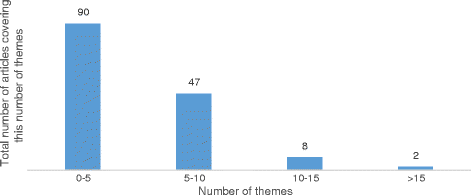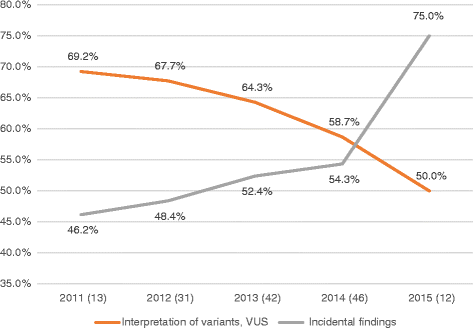Unsolved challenges of clinical whole-exome sequencing: a systematic literature review of end-users' views
- PMID: 27514372
- PMCID: PMC4982236
- DOI: 10.1186/s12920-016-0213-6
Unsolved challenges of clinical whole-exome sequencing: a systematic literature review of end-users' views
Abstract
Background: Whole-exome sequencing (WES) consists in the capture, sequencing and analysis of all exons in the human genome. Originally developed in the research context, this technology is now increasingly used clinically to inform patient care. The implementation of WES into healthcare poses significant organizational, regulatory, and ethical hurdles, which are widely discussed in the literature.
Methods: In order to inform future policy decisions on the integration of WES into standard clinical practice, we performed a systematic literature review to identify the most important challenges directly reported by technology users.
Results: Out of 2094 articles, we selected and analyzed 147 which reported a total of 23 different challenges linked to the production, analysis, reporting and sharing of patients' WES data. Interpretation of variants of unknown significance, incidental findings, and the cost and reimbursement of WES-based tests were the most reported challenges across all articles.
Conclusions: WES is already used in the clinical setting, and may soon be considered the standard of care for specific medical conditions. Yet, technology users are calling for certain standards and guidelines to be published before this technology replaces more focused approaches such as gene panels sequencing. In addition, a number of infrastructural adjustments will have to be made for clinics to store, process and analyze the amounts of data produced by WES.
Figures





References
-
- Lyon GJ, O’Rawe J. Human genetics and clinical aspects of neurodevelopmental disorders. In: Mitchell K, editor. The Genetics of Neurodevelopmental Disorders. 1st edition. Hoboken: John Wiley & Sons, Inc.; 2015:289–317.
Publication types
MeSH terms
LinkOut - more resources
Full Text Sources
Other Literature Sources

